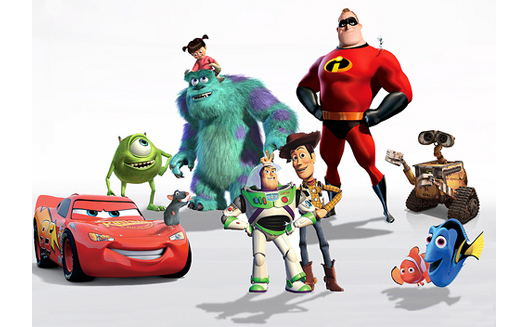3 Key Lessons for Creative Entrepreneurs from Pixar

 Art and design remain among the most sought
after skills in the Pakistani market, which is experiencing a boom
in sectors such as media, animation and gaming. We.R.Play in Islamabad
and Mindstorm Studios in Lahore are examples of successful
startups which employ large teams of artists including concept
designers, illustrators, renderers and UI specialists to build
their gaming titles.
Art and design remain among the most sought
after skills in the Pakistani market, which is experiencing a boom
in sectors such as media, animation and gaming. We.R.Play in Islamabad
and Mindstorm Studios in Lahore are examples of successful
startups which employ large teams of artists including concept
designers, illustrators, renderers and UI specialists to build
their gaming titles.
But as anyone in this space in Pakistan will tell you, hiring and
grooming artists to work on designing games and applications is an
incredible challenge. The pipeline connecting art graduates to the
industry is not refined and there are few professionals in the
local industry who take on the onerous task of training and
managing teams of artists in a structured environment.
The documentary “The Pixar Story,” is one movie that may provide a
blueprint for uniting art and industry. As it explains the origins
and culture at of Pixar, a prominent animation company based in the San
Francisco bay area, it offers lessons for the many startups around
Pakistan looking to make an impact in the animation and graphics
space.
Animation is both art and science
“The Pixar Movie” does a great job of illustrating how successful
graphic artists have an appreciation for both the aesthetics and
technicalities of graphic design and are often a product of a
dynamic educational system that encourages cross-pollination
between schools of art and schools of engineering.
In Pakistan, a lack of connection between arts and science is
probably the biggest reason that the native animation sector is
lagging in producing a critical mass of skilled graduates. On the
one hand, we have prestigious art schools like National College of
Arts (NCA) and the Indus Valley School of Art and Architecture
(IVS) that do an excellent job of providing art training but have
shown a limited interest in merging this skill with technology. On
the other hand, graduates at NUCES (National University of
Computer and Emerging Sciences) and LUMS (Lahore University of
Management Sciences) who are technically proficient but get few
opportunities to enhance their skills in the artistic domain.
It is the rare individual who is equally competent in both domains,
and today, this typically takes personal initiative. But there is
no reason that industry and academia in Pakistan cannot collaborate
to groom the right kind of graduates at the school level.
Artists need to collaborate
Most managers in the gaming and animation space tend to come from
an engineering background and have a tendency to outsource
well-defined tasks to art teams that execute independently, without
a lot of collaboration. In “The Pixar Story,” the star team is
comprised of multi-disciplinary individuals who are extremely
involved in defining the nature and scope of complete films. Most
artists working in game and application development develop a deep
interest in the field and have many creative ideas about how to
make them look and feel better. The sooner we move beyond seeing
them as assembly lines churning out sprite sheets and instead
involve them in the entire process of defining a product and its
features, the faster we will get to see their full potential.
According to Pixar, the secret sauce for successful creative
development is designing products that you yourself would enjoy
using. The best way to make that happen is to involve artists and
users in the design process.
Great ideas come through observation
The film also reveals the power of observation. Pixar movie “A
Bug’s Life” was inspired by observations of bugs in an adjoining
garden. “Finding Nemo” was conceived upon a journey through a glass
tunnel filled with marine life. The message is that creative teams
can draw from observation of their surroundings to come up with
themes for their next great product. Game and application companies
should do the same, giving their design teams the opportunity to
brainstorm new products and relate them to their own observations.
At mobile publisher Tintash, for example, we derive inspiration
from playing board games to understand what makes them fun. The
time spent on exercises that get the creative juices flowing is a
critical part of the planning cycle and well worth the
investment.


